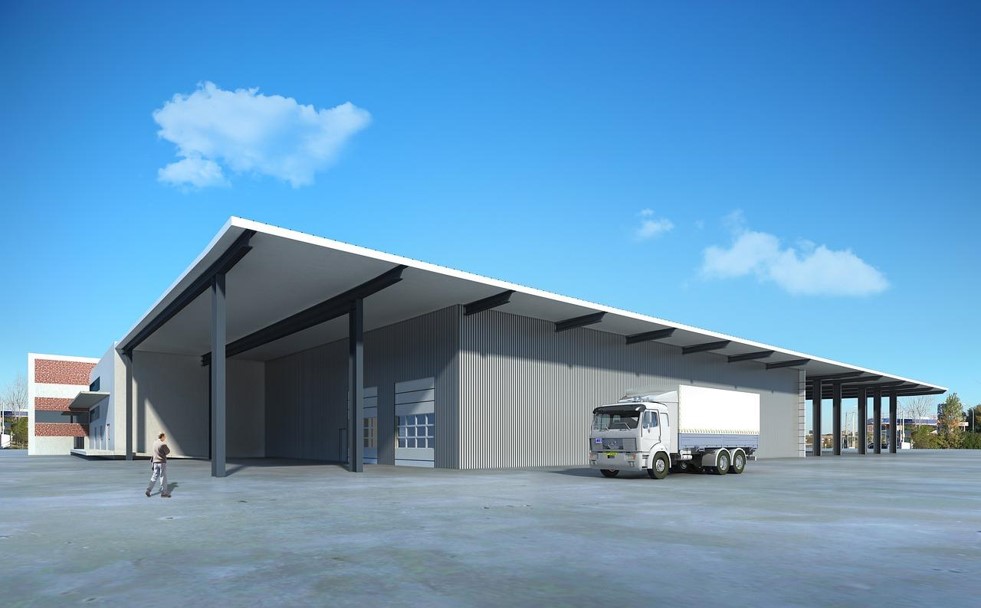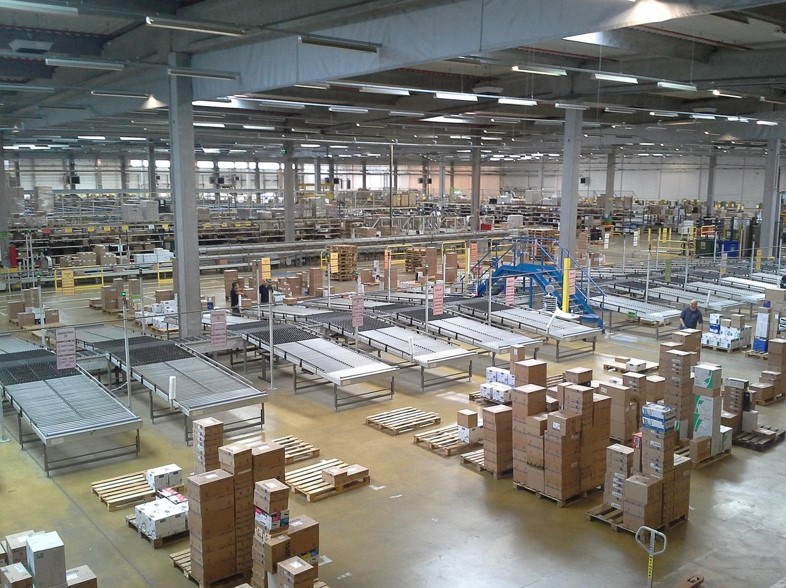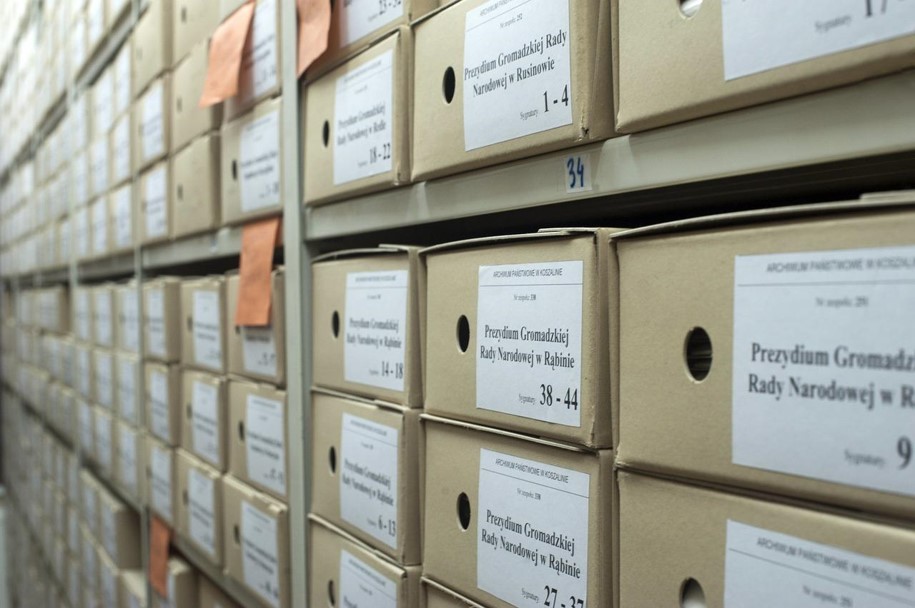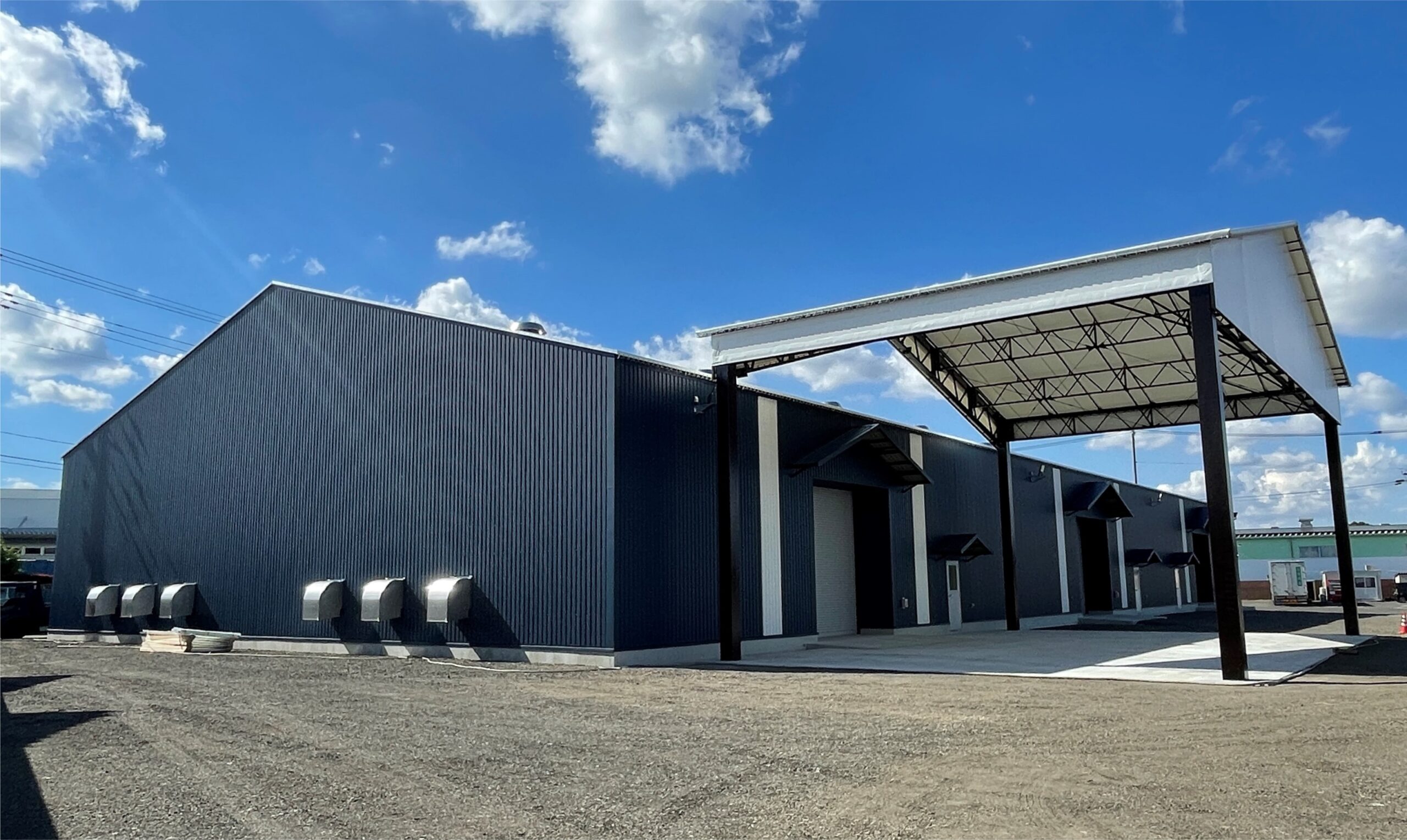

Taiyo Kogyo Column
WMS implementation has many advantages for warehouse and inventory management! Explanation of basic system selection and recommended comparison points
2023.12.27

Warehouse management systems (WMS) have been attracting attention in the field of logistics in recent years, and their introduction can be expected to bring a variety of benefits to warehouse operations. However, since there are several WMS products available, it is necessary to compare and select one before implementation.
WMSs that comprehensively incorporate multiple functions have different characteristics, while common features are expressed in slightly different ways, making it difficult to compare their performance even when examining the free downloadable materials provided by each company.
In this article, we will introduce the basics of how to select a WMS, as well as easy-to-understand points of comparison. We hope you will find this information useful as a reference in order to introduce the optimal system that meets your company’s objectives.
To benefit from a WMS, it is important to select the best product for your company's warehouse management

Since there are disadvantages to WMS implementation, it is important to select a product that will allow your company to successfully cover the anticipated burden.
What will the implementation of a WMS enable?
A WMS is again different from a core system or a stand-alone inventory management system.
Although the details of functions vary depending on the WMS product, the main functions include those related to receiving and shipping, such as receiving management and shipping management; those related to warehouse management, such as inventory control and stocktaking; and those related to warehouse administration, such as returns management and form and label issuance.
It is characterized by its ability to help support overall operations by improving the efficiency of overall warehouse logistics operations, such as receiving goods into the warehouse, storing and managing inventory, taking orders, removing and packaging goods, and shipping them out.
The management that used to be handwritten or manually inputted is now changed to a digital method where barcodes or QR codes are read by a handy terminal or smartphone, making it possible to accurately share a variety of information in the warehouse, including not only the goods but also progress status.
▼WMS is also explained in detail in this article
https://www.taiyokogyo.co.jp/blog/tentsouko/a394
What are the advantages of WMS?
The benefits of implementing a WMS include increased operational efficiency, improved operational quality, and reduced costs, and it is expected to solve multiple problems faced by warehouse operations.
In warehouse operations, it is important to accurately understand orders and ship the correct goods, which requires multiple accurate checks. However, it is not uncommon for mistakes to occur when all checks are done visually, and differences in worker knowledge and experience can also cause problems.
A WMS will help reduce human error by sharing accurate information to each worker in real time and presenting uniform work content in accordance with appropriate rules. Another benefit of a WMS is that it facilitates standardization of complex tasks, making it easier to achieve a certain level of work regardless of knowledge and experience.
This change in warehouse operations and procedures saves time and labor, leading to increased operational efficiency and improved operational quality. Another point often cited is the reduction of labor costs by creating the possibility of using a smaller number of people to perform tasks than previously possible without selecting specific people.
▼The benefits of WMS are also explained in detail in this article
A management system that solves the problems of logistics warehouses [What are the advantages and disadvantages of WMS implementation?
What are the disadvantages of WMS?
Since there are possible disadvantages to implementing a WMS, it is important to choose the appropriate method of incorporation so that the burden on the company does not become greater than it was before the introduction of the system.
After the introduction of a WMS, workers will need time and experience to become familiar with the system and its operation before they can effectively utilize it. Therefore, it will be difficult to improve operational efficiency immediately after the introduction of a WMS. Preparation and action are needed so that individual workers can become familiar with the WMS and become proficient in its use.
In addition, while there is great potential to reduce costs in the future through the use of a WMS, there will be costs associated with its implementation, such as equipment and training costs.
If you choose a WMS that is not well suited to your company, there is a large possibility that only these disadvantages will stand out. Therefore, it is important to select a WMS that is best suited to your company to cover the disadvantages.
Select WMS provision type "Cloud type", "On-premise type", or "Package type".

There are different types of WMS offerings. Since different products offer different types of services, ease of use, and costs, it will be easier to select a product if you know in advance the type of service that best meets your company’s needs. Below is an overview of each type of provision.
Cloud-based WMS
A cloud-based WMS is characterized by the fact that the WMS system is used via the Internet. This eliminates the need to build facilities in-house and allows for quick and hassle-free startup, as well as lower initial costs compared to other forms of WMS.
In terms of cost, the service can be used by paying a monthly or annual fee to the service provider on a regular basis, which can range from several tens of thousands of yen to several hundred thousand yen per month.
However, since the system is already built by the vendor, it is not customizable, and it may be difficult to fine-tune the system to suit your company, so you may have to adjust your business operations to the new system.
In addition, all operations on the system, including related operations, require an Internet connection, so the system cannot be used offline.
on-premise WMS
On-premise WMS is characterized by the fact that the server for the WMS is built in-house. Because it can be customized to the last detail, it is also easy to use when you want to link it with your own in-house system that is already in use.
The initial cost tends to be high in general, as it can cost several million yen to purchase equipment and develop the network, and there is the drawback that it takes time to set up the environment. However, it is suitable when compatibility with one’s own environment and one’s own security requirements are more important than cost and speed.
Since servers and systems will need to be operated and maintained, personnel who can handle these tasks will also need to be deployed. Another key point is to keep the environment around the system, including hardware and software, ready and under control.
These overhead costs are also related to the cost of introduction, but in a long-term cost comparison, they are not necessarily higher than the cost of introduction. It is a good idea to conduct a systematic study with an eye to future development, including the cost aspect.
Packaged WMS
Package WMSs also share some characteristics with on-premise WMSs, such as the fact that the servers are installed on the company’s premises. However, most packaged WMSs do not offer the same level of customizability as on-premise WMSs.
Since the functions and specifications are packaged as a product in advance, the fixed contents are installed and deployed. Therefore, the degree of freedom of operation is probably inferior to the on-premise type.
The package type is relatively easier to implement than the on-premise type, and is useful when there are no special requirements for the system contents or for short-term implementation. Although the cost may be lower than the on-premise type, the initial cost is often several million yen, so it is important to carefully consider the product features and the cost for the planned period of operation before making a choice.
Select a WMS that fits your company's environment, including system integration and industry.

The compatibility of the WMS with your company is also an important point. When selecting a WMS, be aware of whether it is easy to integrate with existing systems, whether it is suitable for your company’s business type and industry, and whether the scale is appropriate, in order to find the best WMS for your company.
WMS that can be easily integrated with the systems used by the company
In many cases, you may not have a WMS in place, but you are using other systems. For example, other systems include mission-critical systems, inventory management systems, delivery management systems, sales management systems, and order management systems.
Although WMS is a system specialized for warehouse management, it also handles a variety of data and can be more easily utilized in conjunction with existing systems.
Therefore, it is also important to choose one that is easy to integrate, such as one that allows API integration with currently utilized systems. However, it may be difficult to integrate with all systems.
In such cases, flexible consideration of the priority of existing systems to be linked and the systems that can be replaced by the WMS will help create a better business environment.
WMS that fits your business type and industry
Some WMS products work well with others less well, depending on the type of business and industry of each company. That is.
Therefore, it is important to choose a WMS with contents suitable for your business type and industry. Since different business types and industries have different characteristics that are important in warehouse management, be sure to choose one that has the main functions you want to manage. It is also helpful to focus on features that may improve your existing issues in line with your future business plans.
For example, if you handle food products in the manufacturing industry, you should have excellent functions for managing expiration and consumption date data. For apparel in the mail-order industry, it is necessary to manage a wide variety of storage locations for different sizes and colors, and it is common for product value to change over time due to trends, etc. A system with highly flexible inventory management functions may be useful.
WMS suitable for the size of company you want to manage
The more functions a WMS has, the better it is. It is also important to have only the functions necessary for your company and to avoid unnecessary costs. However, it is meaningless to have too few functions that do not allow you to achieve your business objectives. Therefore, it is important to select a WMS that is appropriate for the scale of the warehouse you wish to manage.
The choice also depends on the scale of usage, such as how easy it is to use and how much customizability can be used.
A general-purpose system may be arranged to suit your company through customization, but this may require new costs and personnel with specialized knowledge. Therefore, it is helpful to consider the scale of the scope of use as well.
Check and compare the full range of functions, ease of use, and services.

Once you have an overview of WMSs that are a good match in terms of the type of offering and the functions required for your industry, check and compare the individual products in terms of functionality, ease of use, and service.
Since WMS functionality varies among individual products, it is necessary to check whether the product has the features you want to use.
Since there are various functions that can be looked at in detail, such as location management functions, picking functions, billing management functions, bundle management functions, handy terminal functions that can be used offline, and multi-language support, choosing one that can be used more conveniently in your own warehouse management will help improve productivity and operational efficiency.
While the customizability of the system itself has an impact on ease of use, operability in actual usage situations is also a key point. Since operability differs depending on the product, it is important to be conscious of selecting a system that is easy to use for your company’s workers. Information on how the system is actually used, such as operability, can be gathered from product case studies, which are also helpful because they provide information on actual results at the same time.
It is also important to check the support system and service provided by the company offering the WMS product; since the WMS is a system with various functions, it is best to assume that problems may occur after installation. A good support system that can respond to such problems is also a key factor in the ease of use of a WMS.
▼WMS features are also explained in detail in this article
Introduction to the structure and functions of WMS and warehouse management systems! -List of basic information including advantages & disadvantages for introduction~ (after a number N)
Before selecting a WMS, confirm your company's implementation objectives and issues.

However, before actually selecting a WMS, it is also important to clarify your company’s implementation objectives and the issues you are facing in your current warehouse management.
For example, if you find inefficiencies in the receiving stage, time-consuming picking, confusing inventory control, or noticeable errors during inspection, identify in detail any problem areas in each work scene.
By clarifying and visualizing the areas that are hindering business efficiency, it will be easier to select the WMS that best suits your company by narrowing down the information on what problems you want to solve and what functions of the WMS you want to use. It is also helpful to consider cost-effectiveness when choosing a WMS, as this will help you to take cost burdens into account.
Taiyo Kogyo's "Tent Warehouse" is also recommended for WMS implementation and cost reduction

In order to improve the efficiency of warehouse management operations through the introduction of a WMS, there may be times when cost is an issue that cannot be compromised. In such cases, one option is to reduce the cost of the warehouse itself, and use the extra cost to pay for the WMS implementation.
Taiyo Kogyo’s “tent warehouses” can be installed at low cost and on short notice, making it easy to respond to urgent needs. A wide variety of tent types are available, and it is also possible to meet the specialized needs of individual regions, such as types that can withstand snowfall, suitable for cold to heavy snowfall regions.
We will provide the best plan according to the image of the tent warehouse you want to build. Even if you do not have a firm image in mind, we will consult with you to determine the best plan for your needs.
We provide a safe and secure environment for our customers with our unique after-sales service even after the start of use. Please visit our website first.
Click here for a list of Taiyo Kogyo Corporation’s products and services, or click here to request information materials.
https://www.tentsouko.com/
Find the WMS best suited for your company for smart warehouse management
By using a system to solve various problems in warehouse management, which are usually taken for granted, you can greatly improve operational efficiency and reduce the management burden.
Tent Warehouseへの
Contact us

What you need to know when building a warehouse
We packed it all in.
Clues to solving the 2024 problem
Recommended for
I don't know where to start in building a warehouse.
I want to build a warehouse in an economical way.
Which type of warehouse should we build?
I want to learn the basics of warehouse construction anyway.
I'm concerned about the 2024 problem, but I don't know what to do about it.
Related Articles
- TOP>
- Taiyo Kogyo Column>
- WMS implementation has many advantages for warehouse and inventory management! Explanation of basic system selection and recommended comparison points








